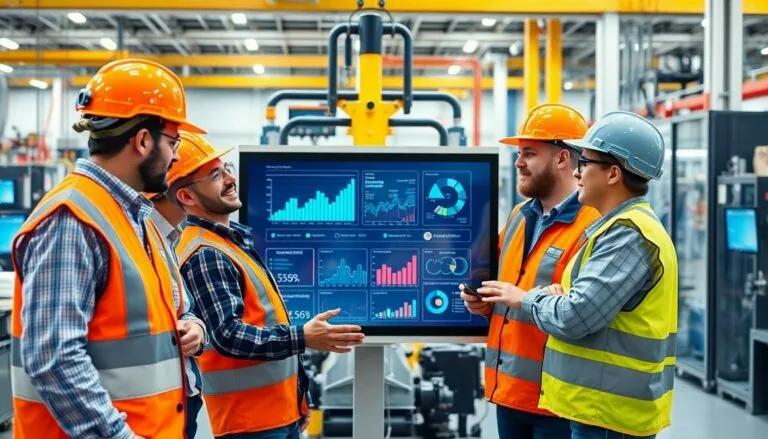Table of Contents
ToggleImagine a world where your fridge knows when you’re out of milk and your thermostat can tell you’re too hot before you even think about it. Welcome to the age of IoT infrastructure, where everyday objects become smart companions. This isn’t just a tech fantasy; it’s the backbone of modern connectivity, blending convenience with innovation.
As devices get smarter, the infrastructure supporting them becomes crucial. From sensors to cloud platforms, IoT infrastructure is the unsung hero that keeps everything running smoothly. It’s like the backstage crew of a concert—without them, the show wouldn’t go on. So, let’s dive into the fascinating world of IoT infrastructure and discover how it’s transforming our lives, one smart device at a time.
Understanding IoT Infrastructure
IoT infrastructure encompasses the foundational elements required to support interconnected devices, enabling smarter and more efficient environments. This framework plays a vital role in transforming everyday objects into intelligent, connected solutions.
Definition of IoT Infrastructure
IoT infrastructure refers to the collection of technologies, networks, and protocols that facilitate communication between devices and cloud services. It integrates hardware components such as sensors, gateways, and connectivity options, establishing an ecosystem where data flows seamlessly. A robust IoT infrastructure ensures devices can collect and share information effectively, contributing to automated processes and smarter decision-making.
Key Components of IoT Infrastructure
Key components of IoT infrastructure include sensors, connectivity networks, and data processing systems. Sensors gather real-time data from the environment, while connectivity networks, like Wi-Fi or cellular, enable communication among devices. Cloud platforms store and analyze data, providing insights and supporting applications that enhance user experiences. Security measures are crucial, safeguarding data and ensuring device integrity. Overall, these components work in harmony to create a cohesive IoT environment.
The Importance of IoT Infrastructure

IoT infrastructure plays a pivotal role in transforming daily life through enhanced connectivity, data collection, and security measures. This foundational framework supports the seamless interaction between diverse devices.
Enhancing Connectivity
Robust connectivity underpins IoT infrastructure, ensuring devices communicate efficiently. Wireless communication technologies, such as Wi-Fi and Bluetooth, connect various smart devices, creating a cohesive network. Furthermore, low-power wide-area networks (LPWAN) enable IoT devices to transmit data over long distances while conserving energy. The integration of 5G technology enhances speed and reliability, making real-time data exchange feasible. Strong connectivity translates to improved user experiences and operational efficiencies across various applications, from smart homes to industrial automation.
Supporting Scalability
Scalability is crucial for IoT infrastructure, allowing systems to grow and adapt as demands increase. Modular architectures let organizations integrate new devices without overhauling existing frameworks. Cloud platforms play a vital role, offering on-demand resources for processing and storage, which accommodates fluctuations in data flows. Increased device connectivity necessitates robust back-end support, ensuring network performance remains stable. Businesses can leverage this flexibility to expand their IoT networks seamlessly while optimizing resource allocation to meet evolving needs.
Types of IoT Infrastructure
Various types of IoT infrastructures play crucial roles in connecting devices and managing data. Understanding these options aids in building efficient and responsive systems.
Cloud-Based IoT Solutions
Cloud-based IoT solutions utilize remote servers to store and process data collected from devices. These platforms offer high scalability, enabling organizations to expand seamlessly as their device count grows. Data analytics tools integrated into cloud services provide insights that drive decision-making. Popular examples include Amazon Web Services (AWS) IoT and Microsoft Azure IoT. These services ensure that devices can communicate effectively and securely, enhancing overall functionality and user experience.
Edge Computing in IoT
Edge computing brings data processing closer to the devices that generate the data. By analyzing data at or near the source, this approach reduces latency and bandwidth usage, improving real-time response. Deploying edge computing devices helps manage heavy data loads efficiently, ensuring quick insights and actions. Examples of edge computing solutions include Google Edge TPU and Microsoft Azure IoT Edge. Emphasizing proximity in this manner boosts system performance and reliability, making it a vital component of modern IoT infrastructure.
Challenges in IoT Infrastructure
IoT infrastructure faces several challenges that impact its effectiveness and growth. Identifying these issues is crucial for optimizing the performance and security of interconnected devices.
Security Concerns
Security concerns represent a significant challenge in IoT infrastructure. Each connected device serves as a potential entry point for cyberattacks, risking data breaches and unauthorized access. Data encryption, network segmentation, and regular security updates help mitigate risks. Implementing strong authentication mechanisms ensures that only trusted devices can connect to the network. Organizations must prioritize security to safeguard user data and maintain trust in IoT solutions.
Interoperability Issues
Interoperability issues hinder the seamless integration of diverse IoT devices and platforms. Different manufacturers often use unique protocols and standards, complicating communication. Standardized communication protocols can bridge these gaps, enabling better compatibility among devices. Ensuring devices can work together fosters more cohesive ecosystems. Effective interoperability ultimately enhances user experience and encourages widespread adoption of IoT technologies.
Future Trends in IoT Infrastructure
Future trends in IoT infrastructure focus on technology advancements and the impact of 5G connectivity.
Advancements in Technology
Emerging technologies enhance the capabilities of IoT infrastructure. Artificial intelligence plays a significant role in analyzing data, enabling smarter decision-making. Machine learning algorithms improve predictive maintenance and optimize device performance. Quantum computing promises increased processing power, allowing for more sophisticated data analysis. Furthermore, blockchain technology enhances security and transparency by providing immutable records of transactions. Innovations in hardware, like more efficient sensors, contribute to lower energy consumption and greater accuracy. Each development accelerates the connectivity and functionality of IoT systems.
The Role of 5G Connectivity
5G connectivity is pivotal for the evolution of IoT infrastructure. This technology facilitates high-speed data transfer, supporting real-time communication among numerous devices. With reduced latency, applications like autonomous vehicles and smart cities become more feasible. Businesses benefit from enhanced bandwidth, which allows for more devices to operate simultaneously without compromising performance. Additionally, 5G networks enable improved coverage in remote areas, extending IoT applications beyond urban settings. These advancements promote a more robust and efficient IoT ecosystem, driving further innovation and integration in diverse industries.
IoT infrastructure is reshaping the way people interact with their environments. By integrating smart devices with robust connectivity and powerful cloud platforms, it’s enhancing convenience and efficiency in daily life. As technology continues to evolve, the importance of secure and scalable solutions cannot be overstated.
Emerging trends like 5G connectivity and advancements in artificial intelligence are set to drive further innovation. With the right infrastructure in place, organizations can unlock the full potential of IoT, paving the way for smarter cities and improved user experiences. The future of IoT infrastructure is bright, promising a transformative impact across various sectors.







